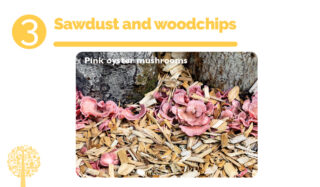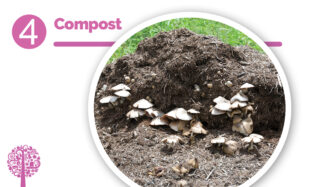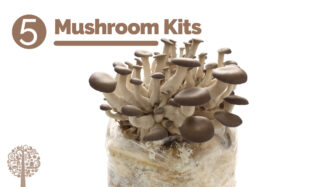How could you not be completely obsessed with mushrooms and all of the incredible benefits they offer? You’re probably thinking it’s time to start cultivating them at home! Hobby gardeners can grow anything from shitake, oyster, and wine cap mushrooms to reishi, nameko, agaricus, and more. We’d love to join you on this journey; first, you need the right substrate. Get started with our 5 Cool Ways To Grow Mushrooms At Home.
Logs

Gardeners living on a wooded lot will likely find logs the most accessible substrate. Walking through a forest, you’ll find mushrooms growing at the base of trees and on their bark just about everywhere. Unfortunately, it’s not as simple as finding a fallen tree and getting mushrooms to sprout! It’s essential to match the type of mushroom you want to grow with the tree variety it likes. Shitake mushrooms, for example, love oak, maple, birch, and cherry trees. Harvest the tree when it’s dormant, between the fall and the spring. Cut the logs into 40” lengths and store them in a shaded, moist area under a tarp for about two weeks. Be sure to innoculate them within two months of harvest so other fungi don’t take over. There are plenty of available resources on log inoculation, but it involves drilling holes, filling them with mushroom spawn, and sealing them closed with wax.
Straw

Got a hankering for oyster or wine cap mushrooms? Well, they’ve got a craving for straw. Like strawbale gardening, be careful when selecting your source for mushroom growing. Weed-free straw from oats or wheat will create a happy environment, while barley and rye straw contains antifungal properties, so avoid those. Shredding the straw offers the best results! Next, you can soak the straw for three to five days or use cold or hot pasteurization to kill off any undesirable seeds left in the substrate. Let it drain for about 24 hours, and place the straw on the ground or in a container to prepare it for inoculation.
Sawdust and Woodchips

Sawdust and woodchips are good for more than mulching the garden! These materials make an excellent substrate for growing mushrooms, especially wine caps and oysters, which grow naturally on something similar in the wild. Sawdust is affordable and can easily be found at home if you’re renovating. If you’ve recently cut some trees or have a local sawmill close by, wood chips should be easy enough to come by, but make sure they’re free of chemicals. The type of dust or chips you also choose matters. Cedar, for example, contains antifungal properties, so don’t go that route. After you’ve found your source, you need to soak, drain, inoculate, and place it in a clean container. You’ll be enjoying delicious mushrooms before long!
Compost

Composting kitchen scraps and yard waste is an easy way to take care of the planet and our gardens. Did you know you can speed up the composting process by growing mushrooms in a heap? Blewits, in particular, will help break down organic matter quicker, turning it into beautiful black gold for your garden. This mushroom also loves to grow on leaf litter; you’ll find them growing all over this substrate naturally in the forest. Start a blewit bed in the midsummer; find a shady spot and rake any debris to expose the soil surface. Water the ground well and cover it with about two inches of leaf litter from the previous fall. Add a bag of blewit spawn to the substrate and mix it well to break up all the chunks. Next, cover the spawn with more leaves; another two-inch layer will do. Mix these layers, water the area again, and cover the garden with a weighted plastic sheet. Leave the sheet in place for two months, but lift it once a week to water. You’ll have delicious mushrooms to feast upon in late fall!
Mushroom Kits

If all of the above seems a little too complicated, or you don’t have access to the space or materials, you can still grow mushrooms at home. Ready-to-use mushroom kits allow you to grow gourmet fungi on your kitchen counter! You can find the kits at nurseries, greenhouses, and online from various sources. They all come with growing instructions, but generally, it involves misting a block live with mycelium daily for about two weeks. Unlike fresh herbs, you don’t need a sunny windowsill; you must place mushrooms out of direct sunlight. Expect anywhere from two to four harvests per kit. Bon appetit!
For more awesome mushroom-growing tips, we love Mushroom Cultivation: An Illustrated Guide to Growing Your Own Mushrooms at Home by Tavis Lynch. This book is also an excellent resource for proper identification, which is crucial when foraging mushrooms.